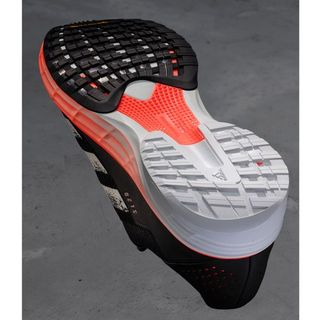You can trust Coach
Adidas has not been especially active in performance-focused shoes over recent years, aside from minor updates to the popular Adios and Boston lines. However, it was only a matter of time before that changed, and the company is releasing two speedy shoes in 2020 – the SL20 and the Adizero Pro.
The latter is Adidas’s answer to the controversial, record-breaking Nike Vaporfly. A cushioned but lightweight racing shoe with a carbon plate and a high price, though at €180 (expected to be around £150 in the UK) it’s still substantially cheaper than the £240 Vaporfly NEXT%.
Like the Adizero Pro, the SL20 is also designed to be used for fast running, but the price is much lower. It has an RRP of £100 that’s already been discounted to £80-ish by some retailers, which looked like great value before I ran in it, and looks like an even better deal now I have.
The SL in the name stands for super light, although at 230g for a UK 8.5 it’s more a case of pretty light. It’s not as light as the Brooks Hyperion Tempo (207g) or Hoka One One Rincon (218g), which are both also fast training shoes, but the SL20 is impressively light considering it has a decent amount of Continental rubber on the outsole, which helps with grip and durability.

Adidas has kept the weight off by using its new Lightstrike foam, which is also used in the Adizero Pro. In the latest Adios and Boston shoes, Lightstrike is used alongside Boost, which has long been Adidas’s go-to performance foam.
Boost is a great, responsive foam, but it’s a little heavy compared with the proprietary foams other companies have developed of late, like Nike’s ZoomX or New Balance’s FuelCell. Lightstrike is made of a compression moulded EVA Foam, rather than the TPU foam used for Boost, but is lighter and trades some of the comfort and bounce of the latter for a firmer, faster ride.
The SL20 is the first shoe I’ve run in with a Lightstrike midsole, and it certainly delivers on the speed front. I used the shoe for two sessions – one interval session doing mile reps and another doing 20 laps of the track, alternating between 90-second and 80-second laps – as well as a few easy runs, and it definitely felt better when running fast. The heel-to-toe transition is smooth and the toe-off is pretty punchy, though not quite the propulsive effect you get from a shoe with a carbon plate.
I don’t think the SL20 lost anything in those fast runs compared with the past versions of the Boston and the Adios I’ve used. It’s not the Vaporfly, of course, and I personally prefer the slightly softer, bouncier feel of the New Balance FuelCell Rebel and Brooks Hyperion Tempo as fast trainers, but the SL20 is comparably quick and far cheaper than either of those.
The Hoka Rincon is another fast option, but with no rubber on the outsole it is likely to fall short in the durability stakes, whereas the SL20 should be as reliably long-lasting as Adidas’s other shoes with Continental rubber on the bottom.
- The Best Running Shoes
- The Best Budget Running Shoes
- The Best Adidas Running Shoes For Every Type Of Runner
The firm ride of the SL20 is less welcome on easy runs, but it wasn’t really uncomfortable. The Boston would be my preferred pick of the two for long running at any pace, and I don’t think the SL20 would make for a great marathon racing shoe – but if you want one shoe to do it all while mainly being a fast shoe for racing in, then the SL20 is fine for short, easy efforts too.
As with all Adidas’s performance shoes, the fit of the SL20 is narrow, to the point where you might consider sizing up if you have wide feet. The tight fit helps the shoe disappear on the foot when you up the pace, but only if it’s not uncomfortably tight.
The SL20 is a racing and fast training shoe for the masses, in that it doesn’t come with an eye-popping price tag like most new launches. It should be durable too, though all I can say for sure at the moment is that there isn’t any noticeable wear after 60km or so of running in it. I don’t think it will be the perfect marathon shoe for most people just because it is quite firm, but it would work well for 5K up to half marathon distance. If you have the need for speed but don’t want to spend more than £100 on a shoe, there’s nothing better available right now.

Nick Harris-Fry is a journalist who has been covering health and fitness since 2015. Nick is an avid runner, covering 70-110km a week, which gives him ample opportunity to test a wide range of running shoes and running gear. He is also the chief tester for fitness trackers and running watches, treadmills and exercise bikes, and workout headphones.

